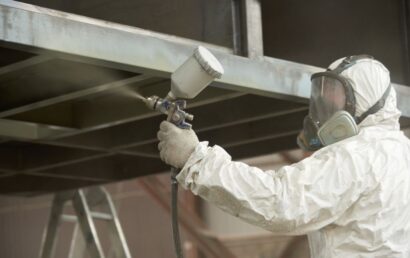Why Do Orthopaedic Implants Need Chromium Oxide Coatings?
Millions of individuals in today’s society are walking and running around with orthopedic implants. They likely have no idea that, once upon a time, orthopedic implants were, more or less, a ticking time bomb. Thanks to the creation and use of chromium oxide coatings, however, orthopedic implants are safer than ever before.
Implants of old reportedly released a little something into the human body known as chromium ions. And that’s not good. But when test pieces that were coated with chromium oxide were laboratory tested (in Ringer’s solution), no chromium ions were present after the testing process was completed. Additionally, these pieces were tested for strength and adhesion changes. The chromium oxide coatings also helped the pieces retain substantial adhesion.
Not being a rocket scientist or a medical engineer, one can only imagine the significance of a finding such as this. The last thing the medical world needs are more causes for additional lawsuits resulting from a procedure or faulty implants.
The Plasma Spray Process
This is the process used to spray chromium oxide powder on orthopedic implants and other parts and components. Originally, it was made to produce wear-resistant coatings that are hard and dense. Additional properties of these coatings are anti-galling and self-mating. Particularly under conditions where temperatures are under 1000°F or 540°C, plasma chromium oxide coatings resist wear by cavitation, particle erosion, hard surfaces, and abrasive grains, among others. In alcohol, alkalis, and acids, the coatings are insoluble. They can also be used in environments where temperatures reach as high as 350 to 400°F or 177 to 205°C, under corrosive chemical conditions(when they are properly sealed).
A Bonus Use of Chromium Oxide
Plasma chromium oxide coatings have even found a niche in the textile industry. They are used on elements of machines. These elements come into contact with threads and fibers and a substantially course corrosion, wear resistant, hard, brushed finish ceramic coating is needed.
Coating Solutions and the Medical Industry
Where the medical industry is concerned, protective coatings can be used in more instances than on just orthopedic implants. The following two examples will shed light on that statement:
- OTC Medicines – Next time you buy your OTC medicine from a retail store, pay close attention to the encapsulated medicines and their heat shrink tunnels. To accomplish the heat seal needed, an L-bar sealer is used. To take the product to the chamber that heats it, a belt is used. Both use protective coatings. Technologies involving thermal spray allow these thermoformed plastics to have a seamless closure.
- Packaging – Multi-layered breathable polyfilms frequently confine components, devices, and medical tools during packaging. The packaging industry uses protective coatings all the time. So much so, in fact, that a proprietary coating material was developed specifically for the industry of medical device packaging. The fact that the packaging deals with sterilized products determined the need for this one of a kind coating.
If you would like more information on chromium oxide coatings and how they can be beneficial to you, your company, and in your industry, contact us today at A&A Coatings. With our 70 years of experience, knowledge, and stellar customer service, we have built a reputation for trustworthiness. We want to be your go-to thermal spray coating service! Give us a call or email to see what we can do for you.



